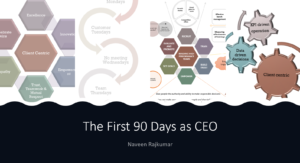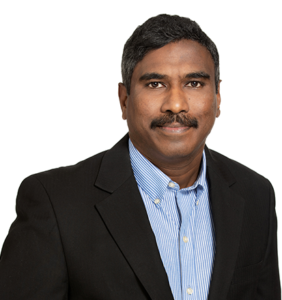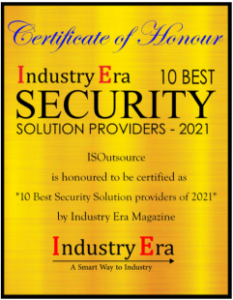The first year as a new CEO is filled with fleeting moments that make you believe that you have figured it all out, followed quickly by experiences that inject a huge dose of humility and remind you that there is plenty more to learn.
A new CEO is constantly surprised by unexpected high points as well as low points, unforeseen challenges which serve as great learning opportunities, a mix of great decisions and some poor ones, all contributing to their evolution as a leader.
Many valuable lessons were learned during my journey through the first four quarters in the role.
The First Quarter – Building Trust
 The importance of the first 90 days cannot be overlooked. First impressions are important and taking time to build trust rather than chasing quick wins will reap rewards in the long run.
The importance of the first 90 days cannot be overlooked. First impressions are important and taking time to build trust rather than chasing quick wins will reap rewards in the long run.
Click here to read my 30-60-90 day plan. In summary, it was laser focused on building trust by listening and learning. It was also about refining the rhythms of the business and ensuring alignment with key stakeholders.
Balancing the expectations of various stakeholders:
The importance of balancing the expectations of various stakeholders (shareholders, clients, and team members) cannot be underestimated.
If you can talk with crowds and keep your virtue,
Or walk with Kings—nor lose the common touch…
I quickly learnt that listening to top tier clients who drive a majority of revenues cannot take the focus away from the hundreds of clients who are small in size, yet significant. I also learnt that strategy sessions with the Senior Leadership Team and the Board cannot take the focus away from hearing the voice of every single team member (there are various channels available to make this scalable and practical).
CEOs have to distribute their time very carefully among all stakeholders in order to build a solid foundation.
It is Not About You!
It is very easy to fall into the trap of making the CEO role a platform to promote one’s dreams and ideas instead of focusing on the needs of clients, team members, and shareholders.
If you can dream—and not make dreams your master;
If you can think—and not make thoughts your aim…
A CEO needs to be a visionary, a dreamer, someone who is capable of painting the big picture and pointing everyone to the North Star. That said, it is important not to pursue one’s personal dreams at the cost of what’s important to a business.
The Second Quarter – Forming & Norming
At the end of 90 days, the business should be slowly but surely adapting to the new rhythms and there should be a very good understanding of skillsets on the team. ‘Fixed mindsets’ and ‘Growth mindsets’ should have been identified by now. This starts the process of ‘Forming’.
Forming:
The organization structure required to fulfill the goals needs to start falling into place by now. Team members might be required to move to new roles that take advantage of their skillset. Some roles could become redundant, while other roles might require to be broken down and distributed among multiple leaders. It is important that the moves are decisive and communicated in a timely and transparency manner.
Everyone will need to know their exact roles and how they will be measured. The entire organization would have to see the big picture and how these different pieces will work together to make it a reality.
Norming:
As leaders settle into new roles and as department heads start to work together, doubts will invariably creep in. Tensions will rise since team leaders would not fully realize how much they are dependent on each other for the team to be successful. Fingers will be pointed, metrics and KPIs will be debated, goals will be challenged, and the overall team formation will be questioned. Doubts will arise and the decisions of the CEO would be questioned. There will be immense pressure to change course and go back to the old ways.
If you can trust yourself when all men doubt you,
But make allowance for their doubting too;
It is important that the CEO trusts the process during these critical times. It takes time for change to take effect and the norming process could take three to six months at a minimum (a lot longer sometimes).
Being indecisive and reacting to every criticism will be disruptive to the organization. It will make the CEO appear weak and not trustworthy. If enough listening, learning, and discernment has happened in the initial months, there is a high likelihood that the company is on the right track with all the changes.
That said, it is super important for the CEO to discern if any change does have to get rolled back. Some leaders make the mistake of letting their ego take over and refuse to budge. Strong leaders are ok admitting to mistakes and bad decisions and will do whatever is necessary to fix the same.
As mentioned in the quote above, making allowance for the doubts and letting go of personal preferences for the greater good makes a leader appear strong.
The Third Quarter – Storming
Ever been in a phase of life where it feels like a lot of hard work was put into something but the results were nowhere to be seen?
Tiredness and a feeling of futility can slowly start creeping in when the team works very hard to implement a new strategy and don’t see immediate results. Unexpected things can happen during such times of fatigue. A small mistake made by a tired team member can result in a tier-one client impact; a word spoken in anger might lead to a team member leaving in frustration; an unintentional remark by a team member could be taken totally out of context and blown out of proportion, creating a crisis of confidence; a seemingly innocuous email from a leader could be misinterpreted for lack of trust; and a lot of other such things can happen when a sense of fatigue builds in the organization .
If you can keep your head when all about you,
Are losing theirs and blaming it on you…
Accountability stops at the CEO’s desk, whatever the root cause of any situation is. It is important for the CEO to keep a calm head during such times. A CEO should never deflect blame and throw someone else under the bus. A strong leader takes ownership, signals accountability, and works relentlessly to address the root cause of these storms.
An organization becomes stronger and a fabric of trust gets built at the end of such storms (if the storming season is handled correctly and with a lot of empathy).
The Fourth Quarter – Performing (the ‘Fly-Wheel Effect’)
And then all of a sudden, there is momentum!
There is a shift in the mood as the wins start pouring in. New clients sign up in numbers, existing clients send in unsolicited kudos, team members cheer each other on and root for each other’s success, referrals start pouring in as team members realize something special is going on, folks come together to solve problems rather than standing on the side lines and complain, the business starts to get a lot of good PR, and there are whispers in the hallways that something seems different! No one can exactly state what’s going on but it is clear that the fly-wheel effect is starting to happen.
Jim Collins in his book ‘Good to Great‘ talks about the flywheel effect. He says that when people begin to feel the magic of momentum, when they begin to see tangible results, that’s when they line up to throw their shoulder against the wheel and push. A winning team is thus born!
If you can meet with Triumph and Disaster,
And treat those two impostors just the same…
While momentum starts building and results start to show, it is extremely important for the CEO to remain grounded. It just takes a couple of large clients leaving or one economic change to shift momentum and so not getting overconfident is important. Transitions (entries or exits) in the senior leadership team would lead to norming and storming seasons and it is important to remember to deal with ups and downs in a measured way (not get over-excited or depressed).
The above saying is inscribed on the center courts at Wimbledon for that very reason and is a good reminder for leaders.
Summary
It is significant milestone when there is alignment in the organization and everyone starts rowing in the same direction. It might take a year to get to the fly-wheel effect or in many cases, it could take two or three years. Endurance is a key trait required in a CEO.
Team members look for cues from the CEO and the senior leadership team. If we can make every minute count, work very hard and have fun while doing so, the rest of the organization will work hard towards exceeding client expectations since they will see the impact their work has on themselves, their clients, and their organization.
If you can fill the unforgiving minute
With sixty seconds’ worth of distance run,
Yours is the Earth and everything that’s in it..
I would not do justice to this article if I did not end with a note about the importance of balance.
The CEO job can be all-consuming and it is super important to set aside time for other aspects for life that are equally or more important. Faith, family, and friends cannot be prioritized lower nor can there be a compromise on the required amount of sleep, fitness and healthy food. Striving to achieve the right balance and encouraging the team to do the same will increase the probability of success over a longer period of time.
Can’t wait to see what year 2 has to offer! Time flies when you are having fun!!!
Author:

Naveen Rajkumar is the CEO and President at ISOutsource.
He has over 20 years of digital transformation experience and is passionate about creating thriving communities or happy, productive, and supported businesses.

